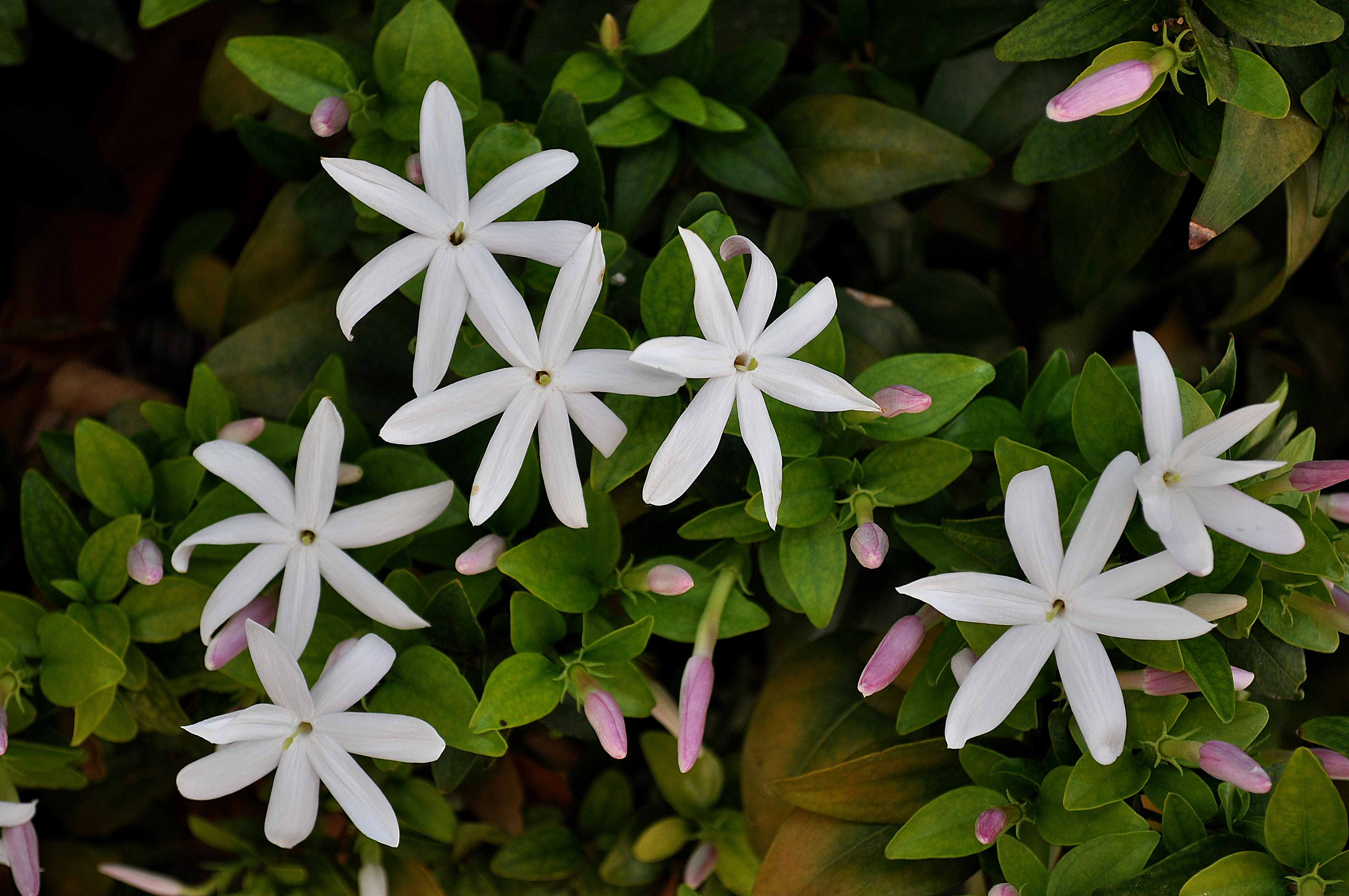African jasmine
(Jasminum multipartitum)

Description
Jasminum multipartitum, the starry wild jasmine, African jasmine, or imfohlafohlane, is a species of jasmine, in the family Oleaceae, that is native to Southern Africa. This 3 metre tall scrambling climber, that can also be grown as a 1.5m tall shrub, thrives in the sun or semi-shade. It produces masses of white, scented, star-shaped flowers and it attracts a variety of birds. It flowers from late spring to summer. This is one of approximately ten species of Jasmine that occur in South Africa. Native to Mozambique, Zimbabwe, Eswatini and South Africa, Starry Wild Jasmine is naturally found in the woodlands of the Eastern Cape and Kwazulu Natal, as well as inland as far as Johannesburg. 'Jasminum' is a Latinized form of the Arabic word, 'yasemin' for sweetly scented plants. Jasmine (taxonomic name: Jasminum) is a genus of shrubs and vines in the olive family (Oleaceae). It contains around 200 species native to tropical and warm temperate regions of Eurasia, Africa, and Oceania. Jasmines are widely cultivated for the characteristic fragrance of their flowers. A number of unrelated plants contain the word "jasmine" in their common names (see Other plants called "jasmine"). Jasmine can be either deciduous (leaves falling in autumn) or evergreen (green all year round), and can be erect, spreading, or climbing shrubs and vines. Their leaves are borne in opposing or alternating arrangement and can be of simple, trifoliate, or pinnate formation. The flowers are typically around 2.5 cm (0.98 in) in diameter. They are white or yellow, although in rare instances they can be slightly reddish. The flowers are borne in cymose clusters with a minimum of three flowers, though they can also be solitary on the ends of branchlets. Each flower has about four to nine petals, two locules, and one to four ovules. They have two stamens with very short filaments. The bracts are linear or ovate. The calyx is bell-shaped. They are usually very fragrant. The fruits of jasmines are berries that turn black when ripe. The basic chromosome number of the genus is 13, and most species are diploid (2n=26). However, natural polyploidy exists, particularly in Jasminum sambac (triploid 3n=39), Jasminum flexile (tetraploid 4n=52), Jasminum mesnyi (triploid 3n=39), and Jasminum angustifolium (tetraploid 4n=52).
Taxonomic tree:







